Designing a space where play, relaxation, and tech merge is easier than ever: today’s game rooms combine immersive lighting, smart controls, flexible furnishings, and themed décor to create personal sanctuaries for every style and budget. From retro arcades to VR arenas, the ideas below highlight practical upgrades—each one delivering clear benefits you can apply right away. Step into the inspiration and imagine which details could level-up your own leisure zone.
1. LED Accent Lighting Transforms Any Game Room
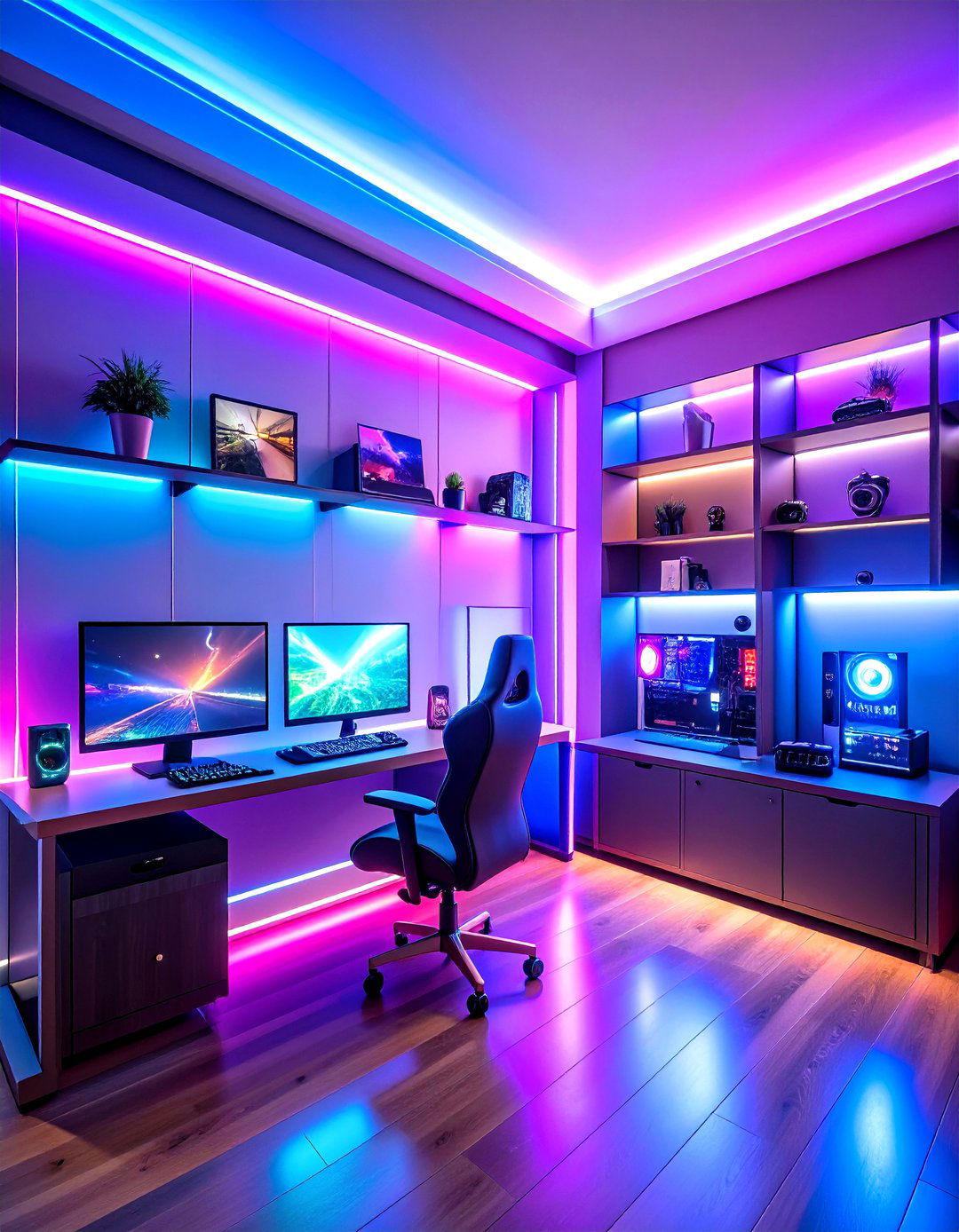
A crisp ribbon of addressable LEDs instantly shifts the mood in a game room, bathing walls and furniture in dynamic gradients that pulse with on-screen action. Flexible strips or neon-style rope secure behind monitors and shelving, while HDMI-sync boxes mirror color bursts from consoles to surrounding light, deepening immersion. Use app-based scenes—calming blues for tabletop night, vivid reds for boss fights—to reduce eye strain and reinforce the room’s theme. Position lights above eye level to avoid glare, add low-glow floor tape for safe night navigation, and connect everything to voice assistants so the vibe changes with a single command.
2. Modular Seating for Flexible Game Room Layouts
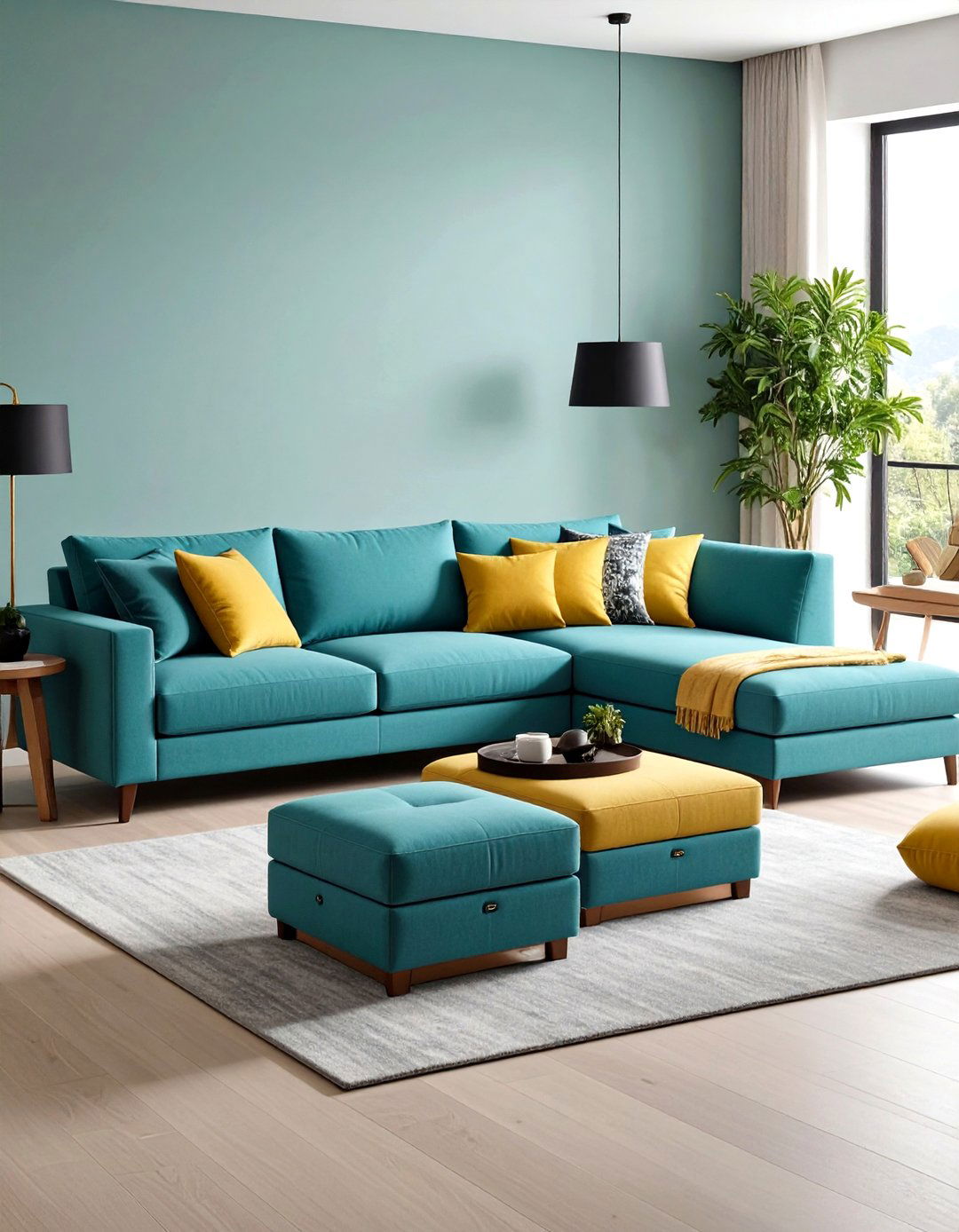
The best game rooms shift from solo focus to party mode in seconds, and modular seating is the secret. Sectional sofas with lightweight ottomans let you push pieces together for marathon co-op sessions or pull them apart for VR play that requires clear floors. Look for stain-resistant fabrics, hidden USB ports, and snap-in cupholders to keep drinks stable during tense matches. Rolling gaming chairs tuck under counters when not in use, and fold-flat floor cushions stack neatly in a corner. Mapping zones on a simple floor plan ensures every module has a parking spot, preventing clutter while maximizing usable square footage.
3. Retro Arcade Corner Brings Nostalgia to the Game Room

A dedicated retro arcade nook anchors a game room with playful history: pixelated wall decals, chrome stools, and a row of mini-cabinets allow quick high-score battles without monopolizing modern setups. Prioritize classics that accept headphone jacks or low-volume modes so 8-bit chirps don’t overpower the main audio system. Add shelves for cartridge collections, LED-lit marquees that double as ambient lighting, and a chalkboard for ongoing scorekeeping. The vintage vibe appeals to guests across generations, making the corner a conversation-starting showpiece and giving old hardware new life.
4. Dedicated Virtual Reality Zone in the Game Room
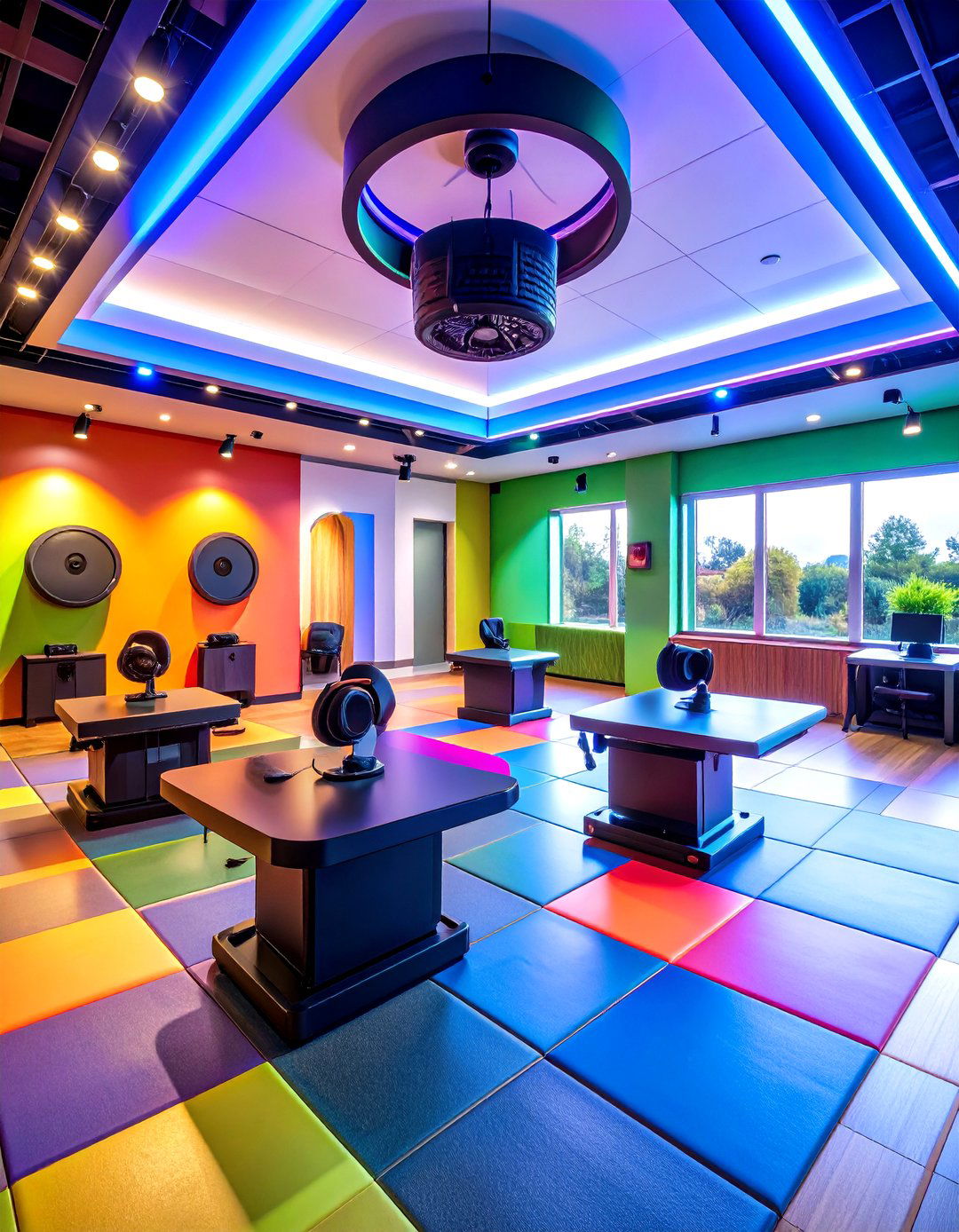
Clearing a VR zone safeguards both gear and players. Mark a two-meter square with foam tiles, install ceiling-mounted sensor brackets, and store headsets in ventilated wall cradles that prevent lens scratches. A swivel-arm cable management reel keeps cords above shoulder height, eliminating trip hazards. Swap overhead bulbs for flush RGB panels to avoid snag points, and drop in a small fan so extended sessions stay cool. Finally, designate drawers for extra straps, microfiber cloths, and silicone face covers, ensuring the VR experience is always hygienic and ready for spontaneous adventures.
5. Projection Wall for Interactive Game Room Play
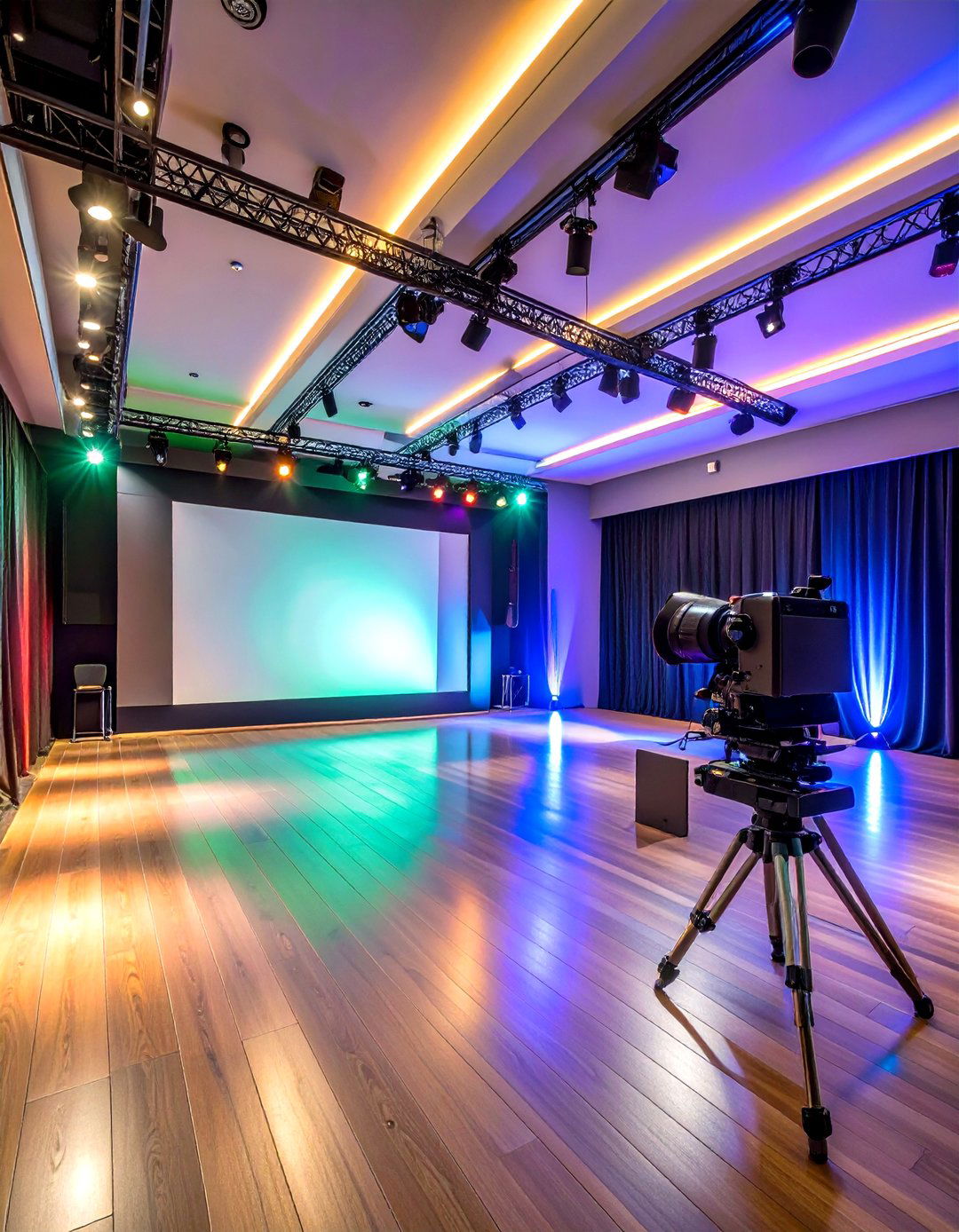
Turning one blank wall into a floor-to-ceiling projection surface unlocks oversized racing, sports, and party titles that pull spectators into the action. Short-throw laser projectors minimize shadowing, while interactive camera sensors convert the same wall into a giant touch screen for rhythm games and fitness apps. Attach blackout curtains on tracks to control ambient light, and paint the surface with high-gain screen paint for crisp contrast. When not gaming, the wall doubles as a cinema or digital art display—maximizing utility without adding furniture.
6. Soundproofing Strategies to Keep the Game Room Quiet
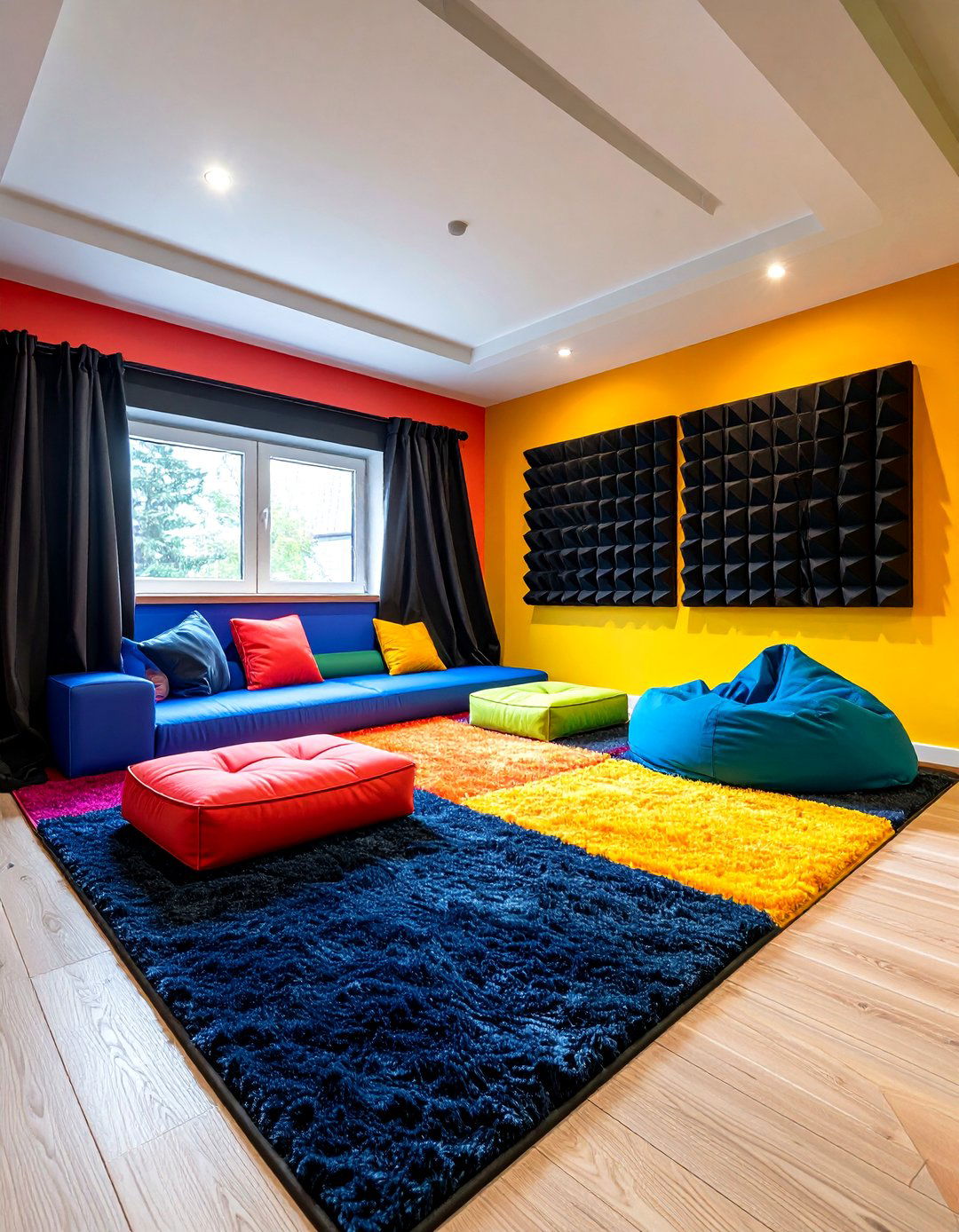
Door sweeps, perimeter seals, and acoustic foam panels dampen rumble so late-night gaming stays neighbor-friendly. Layer thick rugs over hard floors to absorb footsteps, hang dense blackout drapes that double as light control, and fill any hobby alcoves with soft furnishings to reduce echo. For basements or garages, isolated wall studs with mass-loaded vinyl create a true sound barrier. Finally, calibrate volume using a decibel meter app—keeping peaks below 70 dB preserves hearing and harmony alike.
7. Smart Home Controls Elevate the Modern Game Room

Integrating voice hubs and smart switches lets you issue one command—“Game On”—that dims lights, lowers blackout shades, powers consoles, and even starts a snack-bar fridge’s chill cycle. Automations can pause house-wide music when a headset unplugs or flash desk lamps red when online friends join. Use occupancy sensors to shut off gear when the room sits empty, trimming energy bills without sacrificing convenience. Dashboards on wall-mounted tablets show temperature, leaderboard stats, and streaming overlays at a glance, reinforcing the high-tech vibe.
8. Multi-Purpose Convertible Tables for Compact Game Rooms
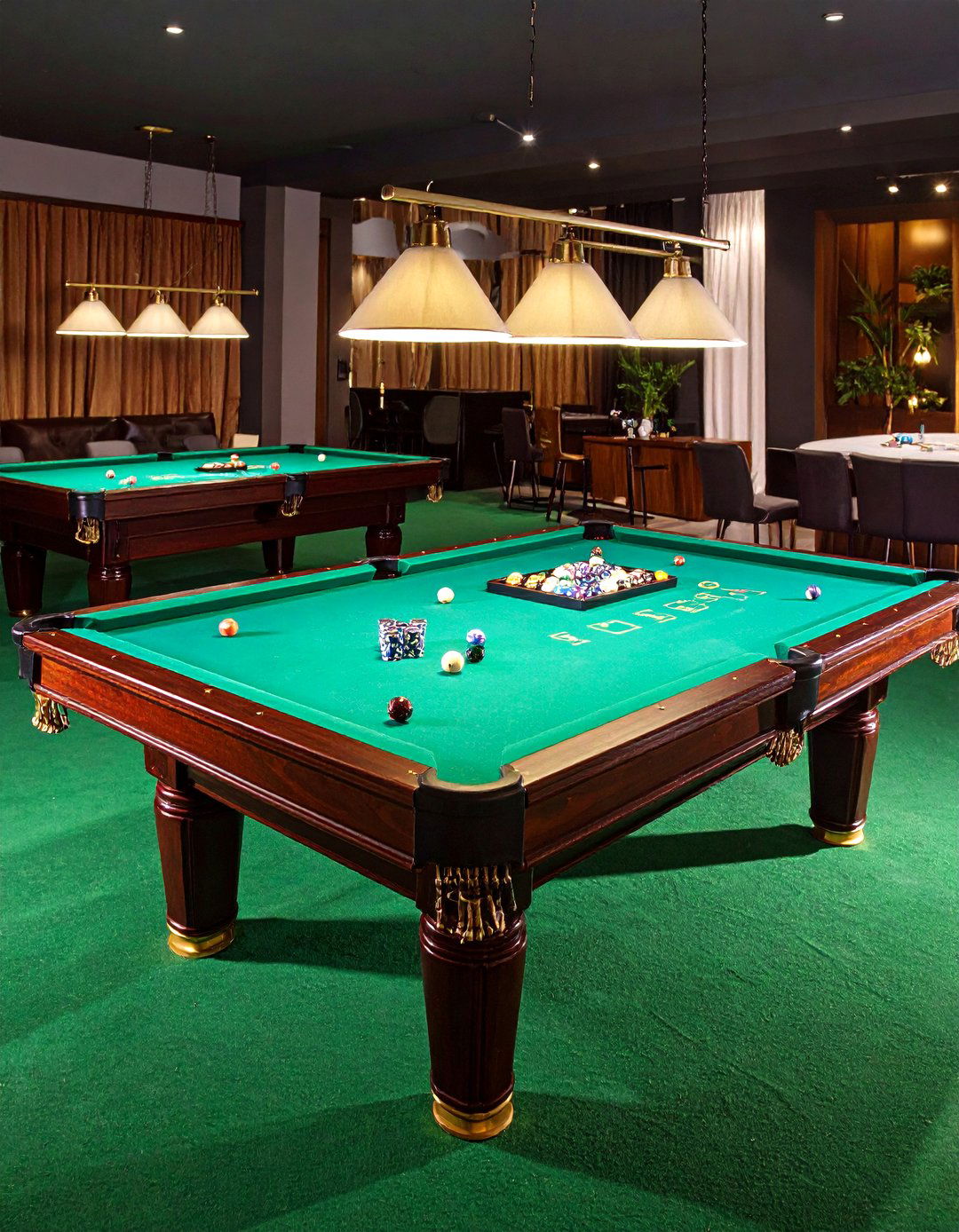
When square footage is precious, furniture must multitask. A flip-top desk reveals a felt-lined poker surface; a dining table drops a slate insert to become a mini billiards zone; even coffee tables hide pop-up foosball trays. Look for gas-lift hinges rated for frequent switches, and keep cue racks or card trays nested underneath to stay organized. Matching finishes—walnut, matte black, or white oak—tie the piece into broader décor so the room transitions gracefully from work-from-home to weekend tournament.
9. Surround Sound Setup for Immersive Game Room Audio
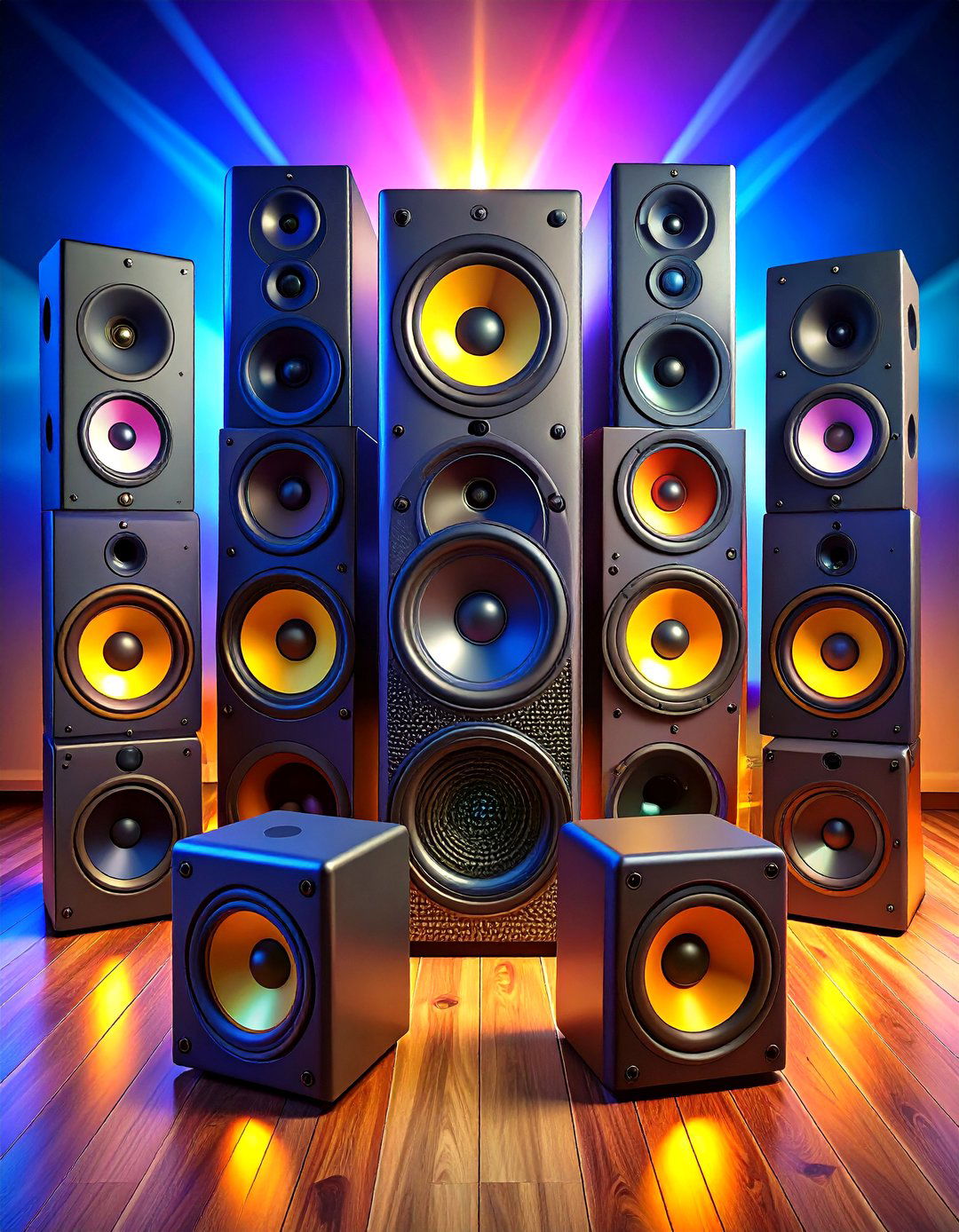
Distant footsteps feel real when a calibrated 5.1 or 7.1 system surrounds the seating zone. Position front speakers at ear height, angle rears toward the center, and add bass traps to smooth low-frequency booms. Wireless rear satellites simplify installation in rental spaces, and an auto-calibration mic fine-tunes distances within minutes. For late nights, switch to tactile transducers bolted under seats—letting you feel explosions without turning up volume.
10. Snack Bar and Mini Fridge Keep the Game Room Fueled
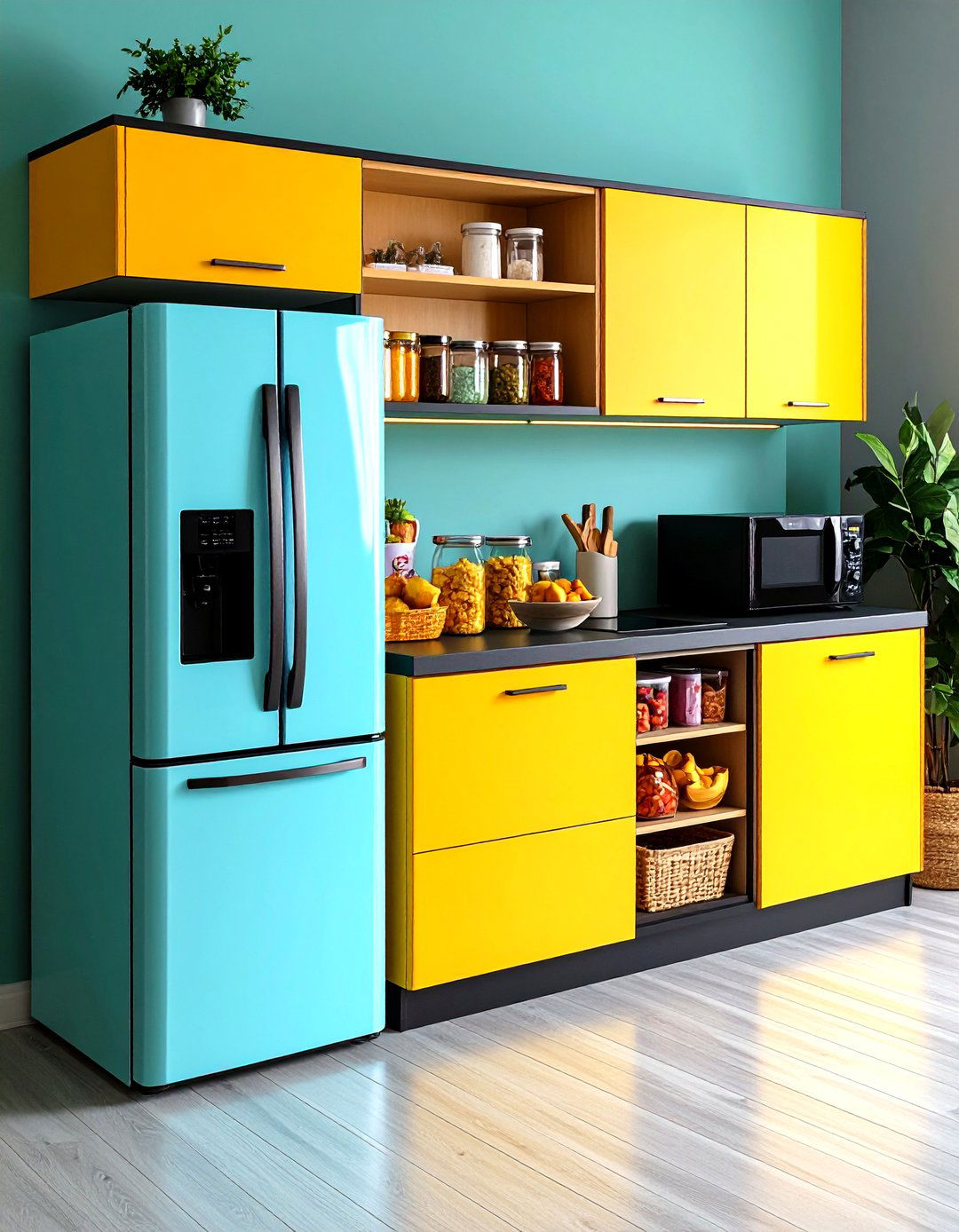
Nothing derails a gaming marathon like a kitchen run. A corner snack bar stocked with a mini fridge, microwave drawer, and pull-out trash keeps refreshments within arm’s reach. Install a splash-proof LED strip beneath the counter for midnight visibility, and assign baskets for healthy bites alongside indulgent treats. Smart fridges even track inventory, sending phone alerts when drinks run low—so the only pause you take is to celebrate victory.
11. Ambient Themed Wall Art Sets Game Room Mood

Large-format prints, pegboard pixel murals, or removable vinyl decals turn blank walls into storytelling canvases. Choose palettes that complement LED accents—cool purples for sci-fi, bold primaries for retro arcade—and add dimmable picture lights to highlight artwork without screen glare. Rotating seasonal pieces keeps the space fresh, while framed instruction booklets or vintage box art bring personal nostalgia front and center.
12. Cable Management to Declutter the Game Room
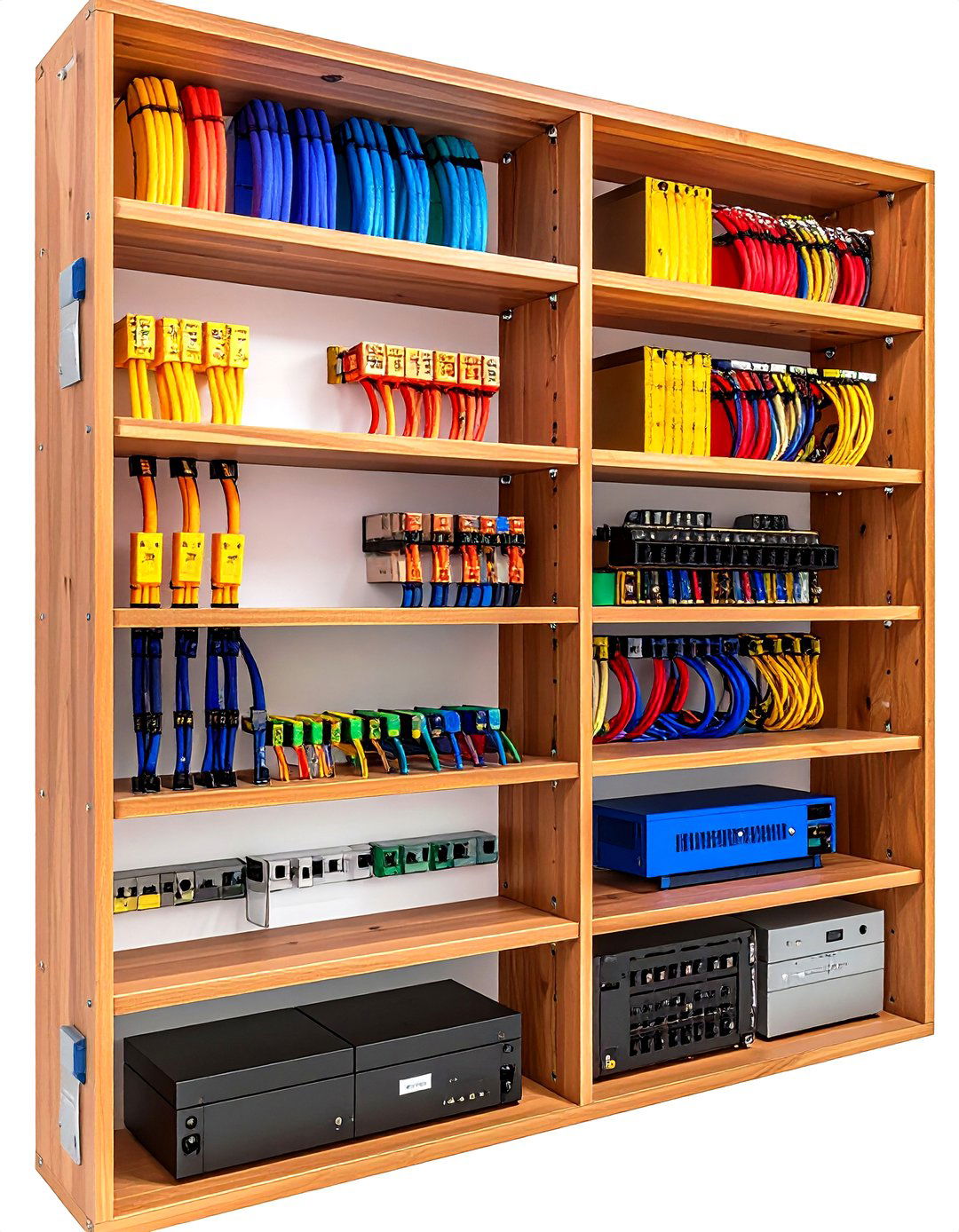
Bundles of wires undermine even the flashiest rig, so plan routing early. Wall-mounted consoles free floor space; raceways painted to match trim hide power cords; and labeled Velcro ties enable quick hardware swaps. A single-outlet surge protector with individually switchable ports lets you power-cycle consoles separately, reducing phantom draw. The visual calm enhances focus and makes cleaning a breeze.
13. Gaming Desk with Ergonomic Extras Anchors the Game Room

A solid sit-stand desk supports posture through marathon sessions, while contoured edges reduce wrist pressure. Pair it with a monitor arm for eye-level screens and add an under-desk bike pedal for subtle movement. Slip LED strips along the rear lip for bias lighting, and tuck a shallow drawer beneath for controllers. By centering the room’s technology, the desk becomes both command center and clutter shield.
14. Kids’ Friendly Section Inside a Family Game Room
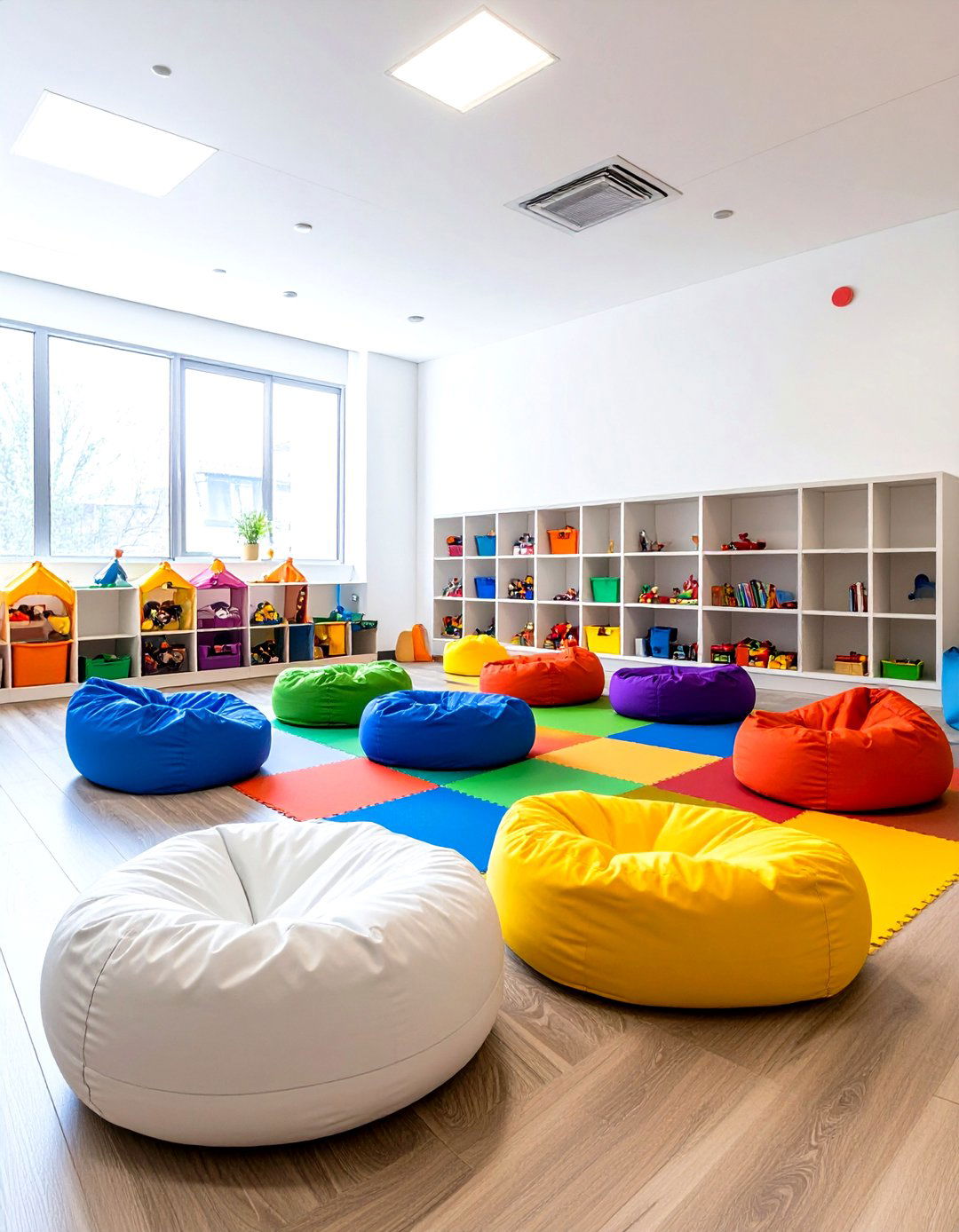
Zoning a soft-surface corner with beanbags, interactive projection games, and easily wiped toy bins allows children to join the fun safely. Low shelves make board games accessible, while wall-mounted controllers prevent tripping hazards. Use bright, durable tiles that click together for future reconfiguration as interests evolve—from motion-based learning apps today to split-screen racers tomorrow.
15. Esports Streaming Station in a Professional Game Room

A compact broadcast nook featuring a ring light, noise-canceling mic, and dual monitors transforms casual play into share-worthy content. Route Ethernet directly to the PC for stable uploads, and mount acoustic panels behind the camera to polish audio. A green-screen pull-down hides ceiling pipes, letting overlays drop you into any arena. Quick-swap HDMI capture cards accommodate consoles so switching titles mid-stream stays hassle-free.
16. Scoreboard and Leaderboards Boost Competition in the Game Room

Digital leaderboards displayed on an old tablet—or integrated into an interactive wall—keep bragging rights visible. Sync the board with online APIs to auto-update multiplayer rankings, or log classic arcade scores manually for nostalgia. Bonus: tie house chores to points earned, turning playful rivalry into productivity.
17. Mixed-Media Storage Keeps Game Room Organized
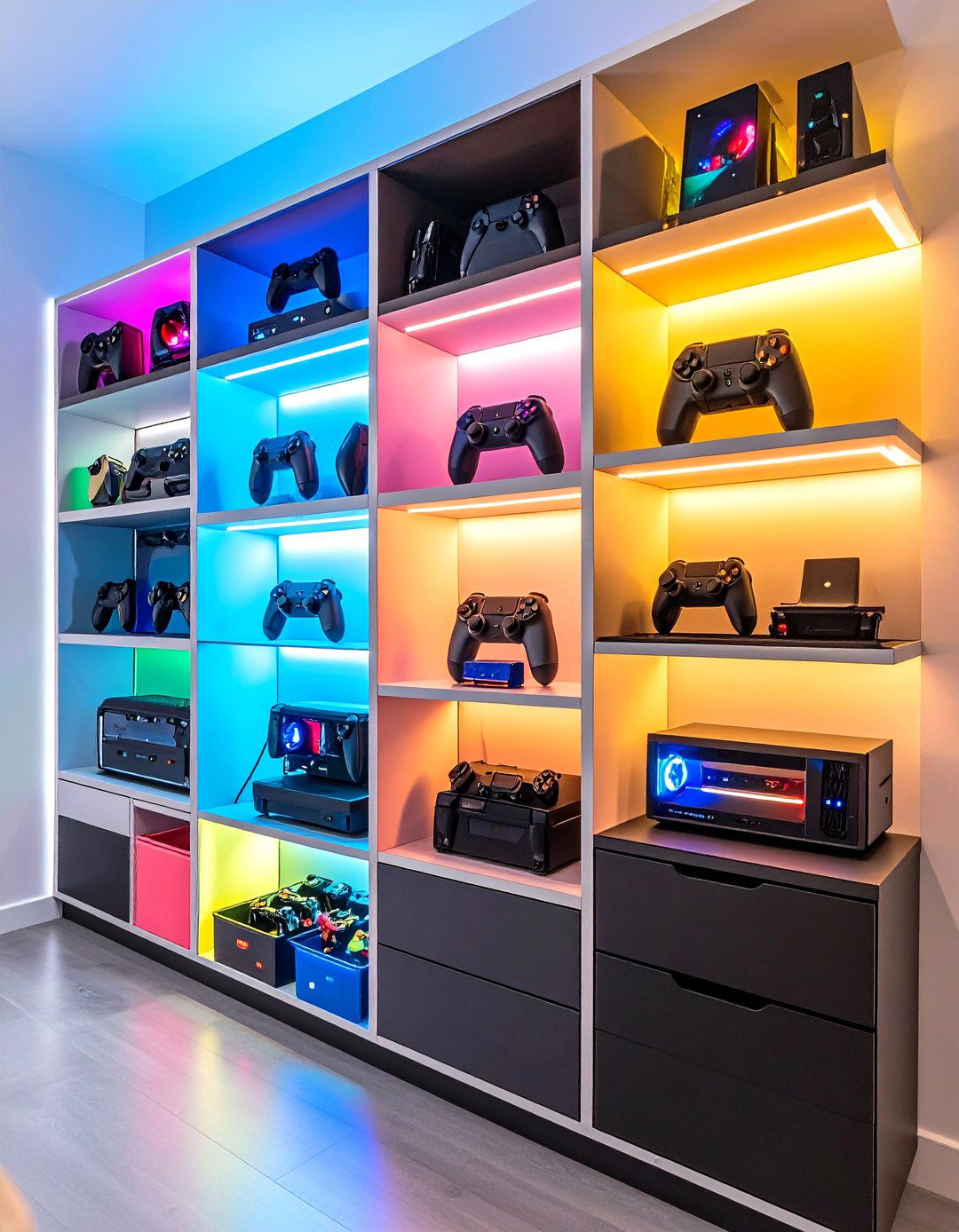
Floating shelves for collectibles, deep drawers for controllers, and vertical racks for guitars or fight sticks ensure every accessory has a home. Clear bins labeled by console cut search time, and a hidden charging cabinet sends power through pass-through grommets so handhelds stay ready yet out of sight. Good storage guards against cables tangling and discs scratching, preserving gear longevity.
18. Lighting Sync Tech Matches Game Room Visuals to Action
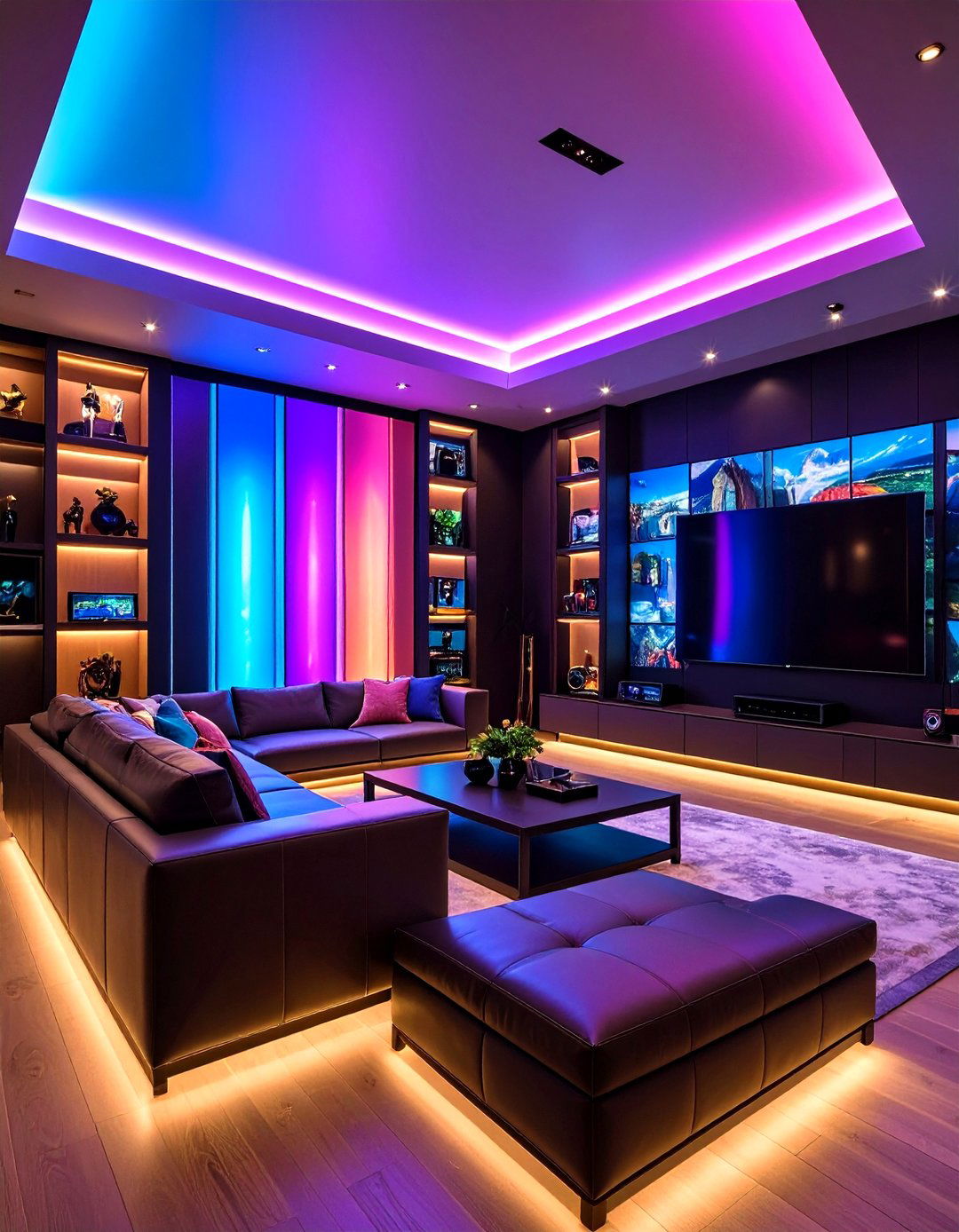
HDMI-based sync boxes scan frame data in real time, pushing complementary hues across backlights and wall panels, extending visuals beyond the screen. For PC play, software overlays pull color values straight from GPU output, letting ambient glow mirror in-game sunsets or health bar flashes. The synchronized spectacle increases immersion and serves as eye-friendly bias lighting that reduces fatigue during extended sessions.
19. Luxury Lounge Zone for Relaxed Game Room Vibes

When the high-octane matches end, plush recliners, a low coffee table, and dimmed sconces invite cooldown chats or handheld gaming. Layer textures—faux fur throws, velvet cushions—and install a silent ceiling fan to keep air fresh. An accent fireplace (electric, for safety) adds cozy ambiance without heat buildup, elevating the entire game room from mere play space to sophisticated retreat.
20. Outdoor-Inspired Elements Bring Freshness into an Indoor Game Room

Unique biophilic touches—LED-lit terrariums, reclaimed-wood wall slats, or a ceiling cloud panel—add calm contrast to high-tech gear. Strategically place live plants that tolerate low light to boost air quality, and use natural-tone RGB presets to simulate dawn or dusk during marathon sessions. The subtle nod to nature balances screen time with visual rest, making the game room feel expansive and revitalizing.
Conclusion:
Crafting a game room is about blending function, comfort, and personal flair: from mood-shifting LEDs and modular seating to smart automations and competitive leaderboards, each upgrade serves a clear purpose—enhancing immersion, organization, or social enjoyment. By layering these ideas thoughtfully, you transform any spare room, basement, or corner into a versatile hub where technology and relaxation coexist, ensuring every gaming moment is as memorable as the games themselves.


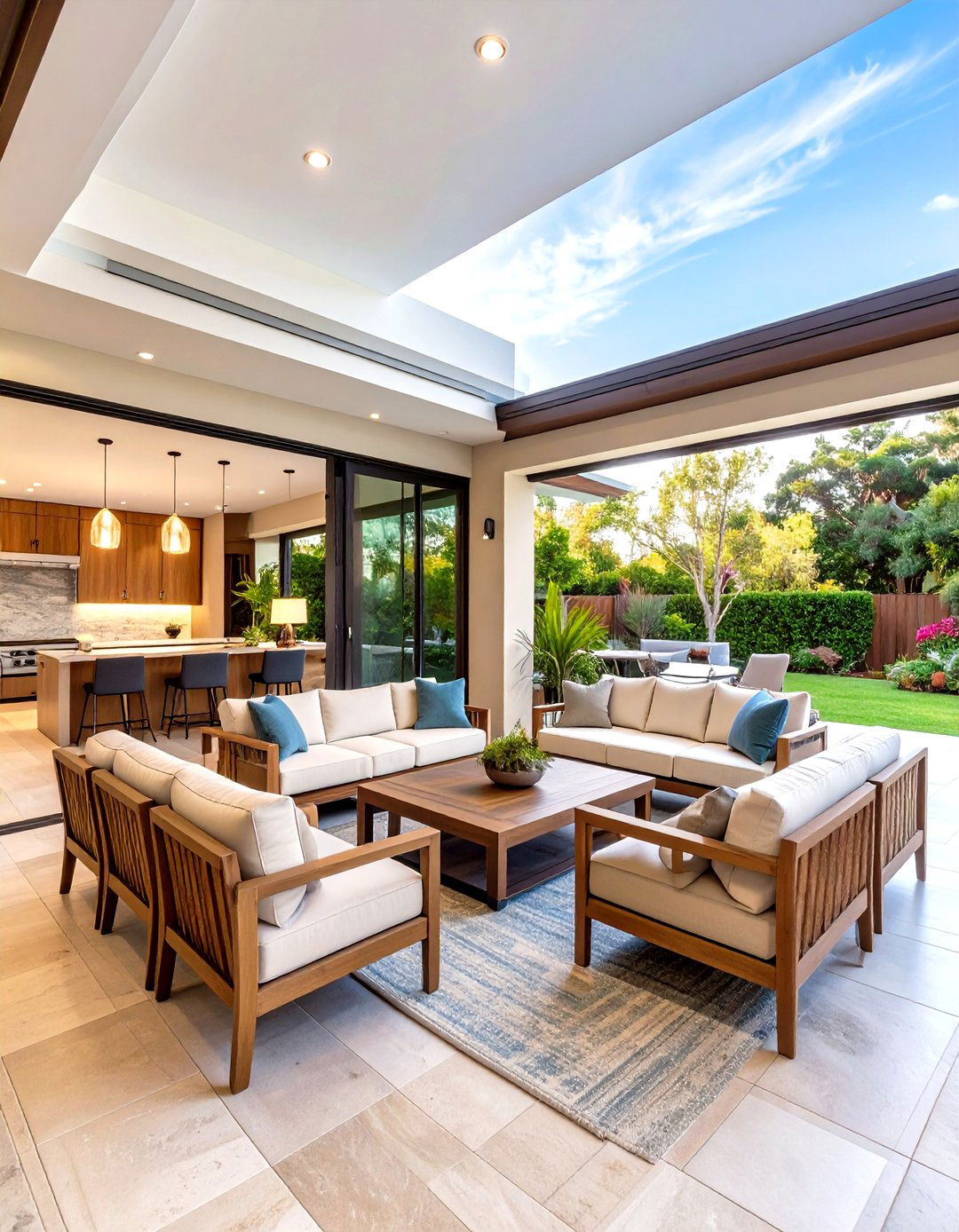
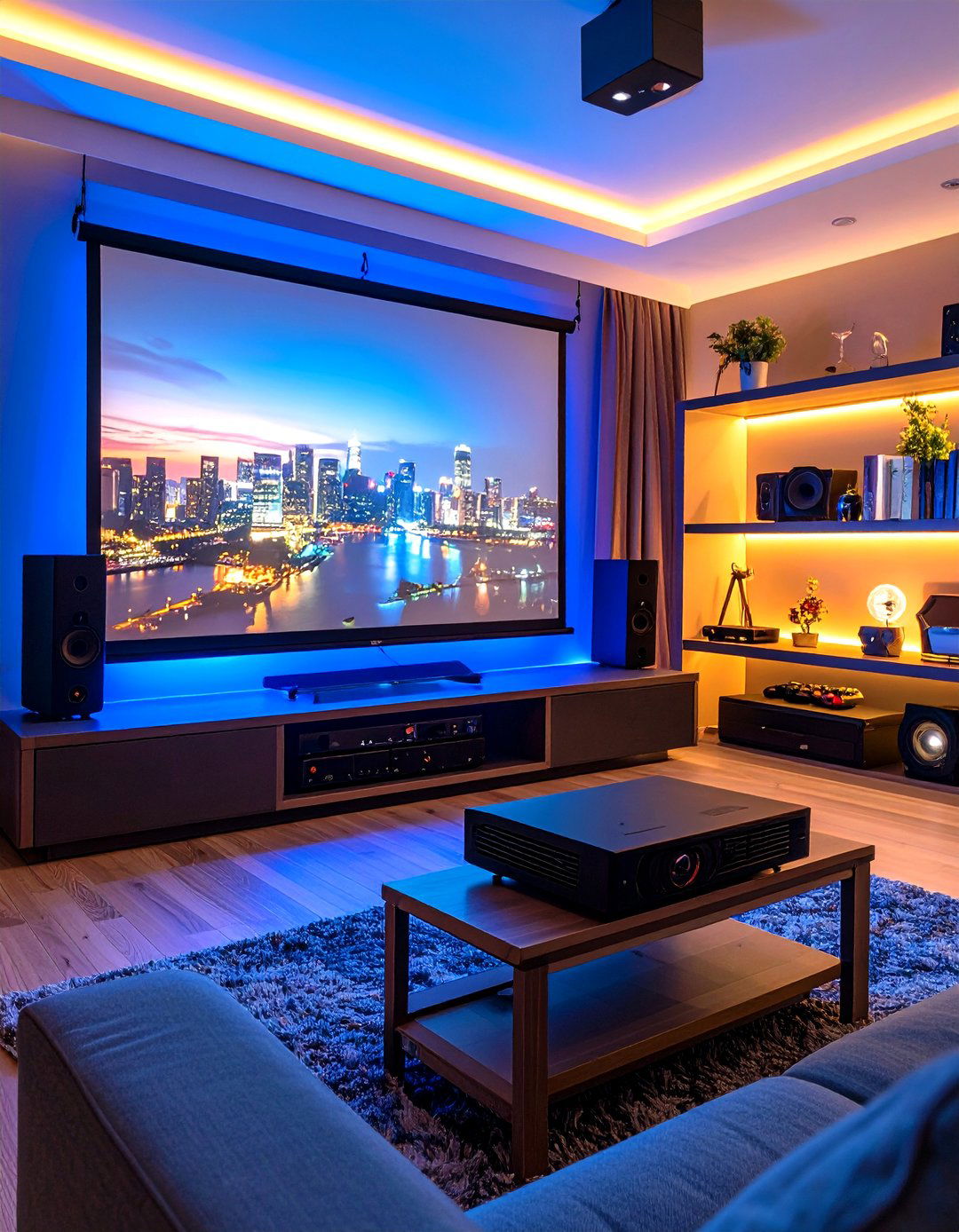
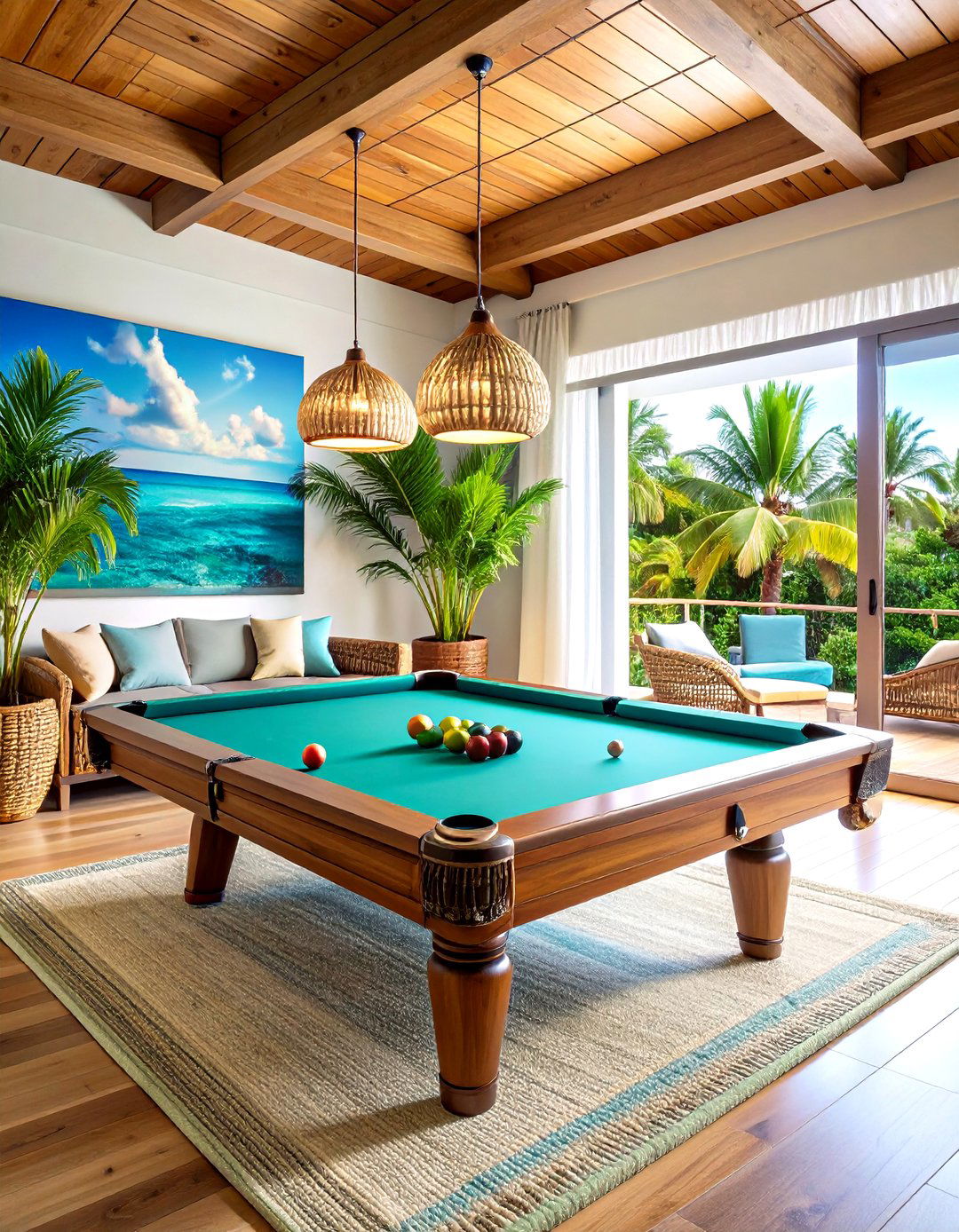
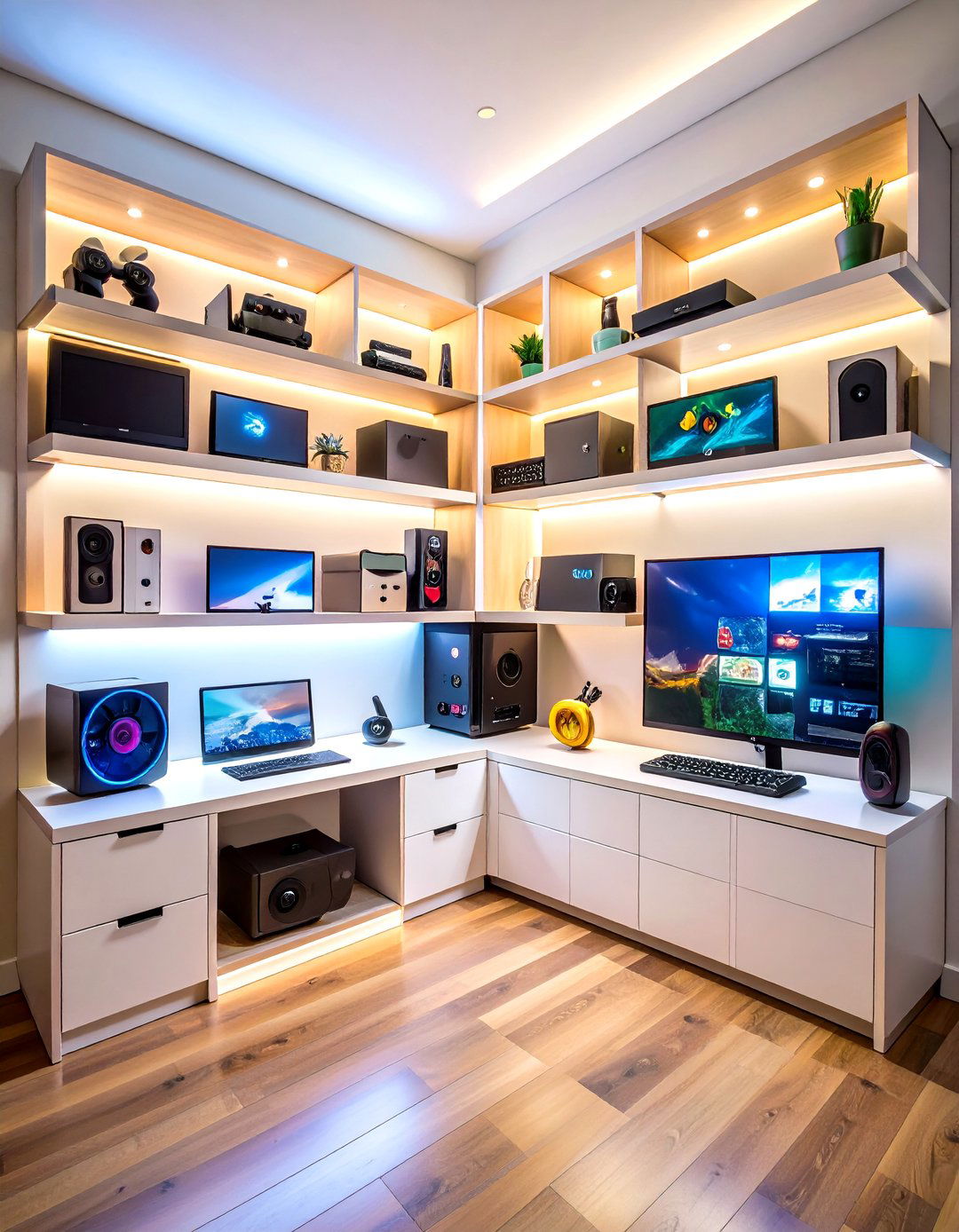


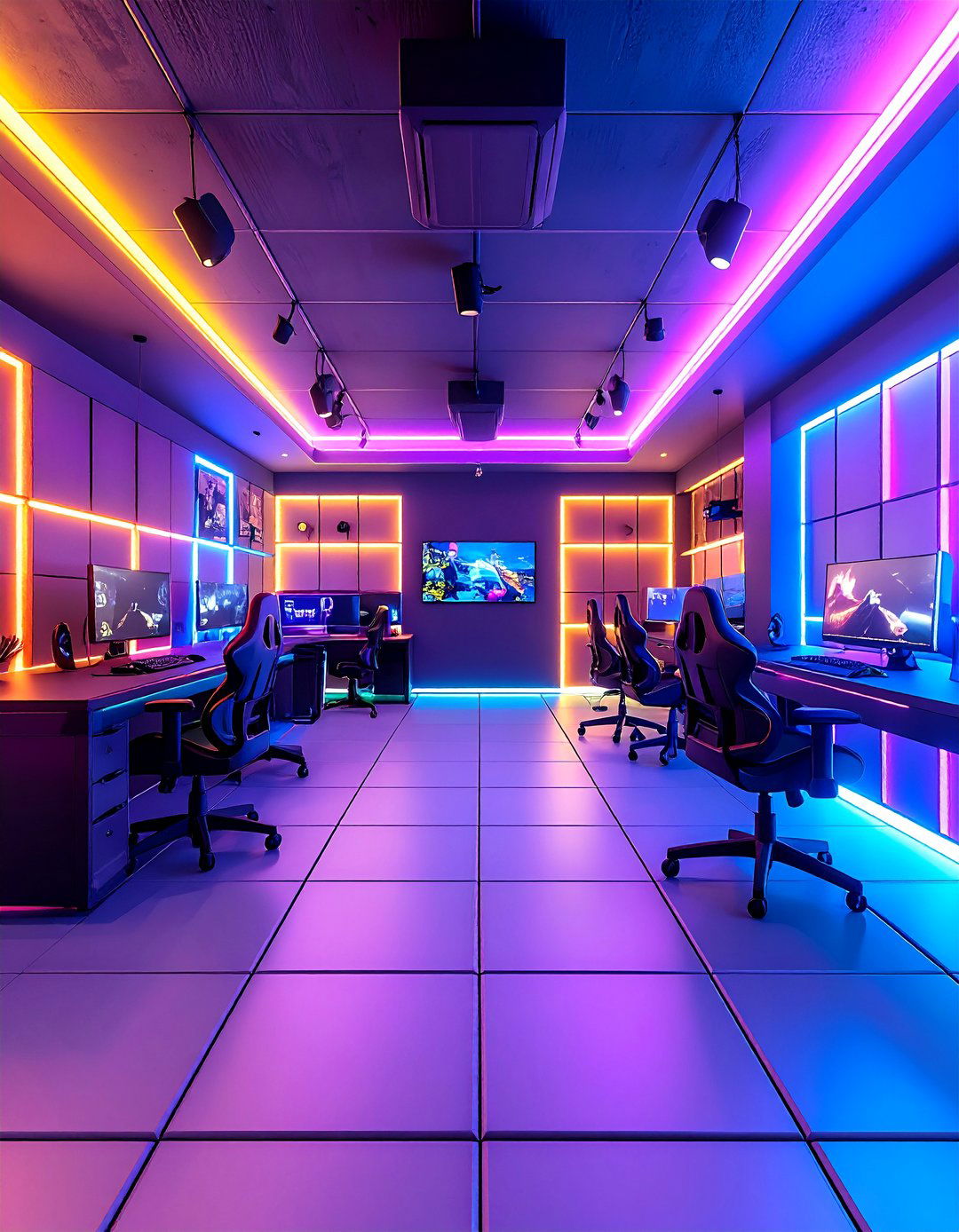
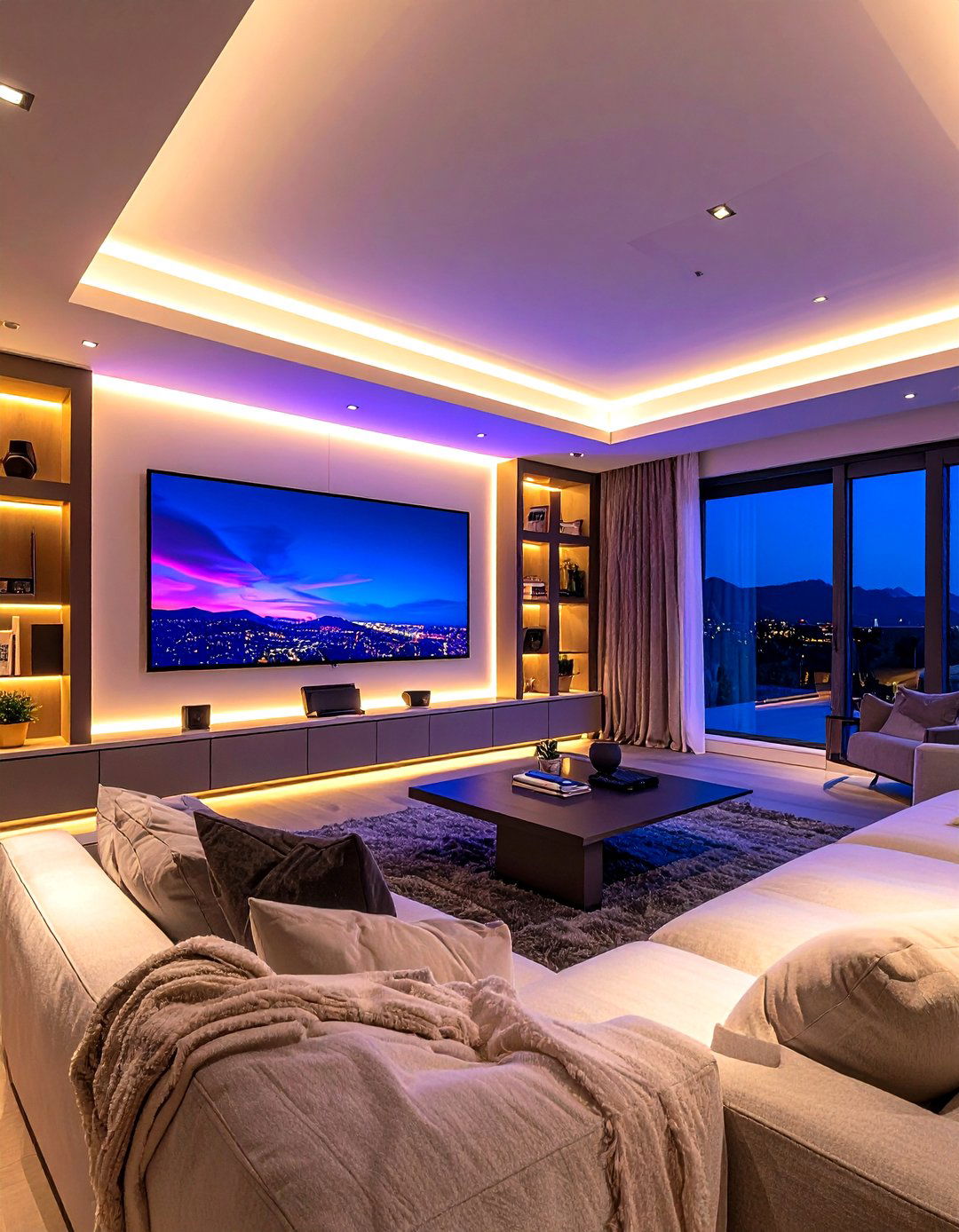



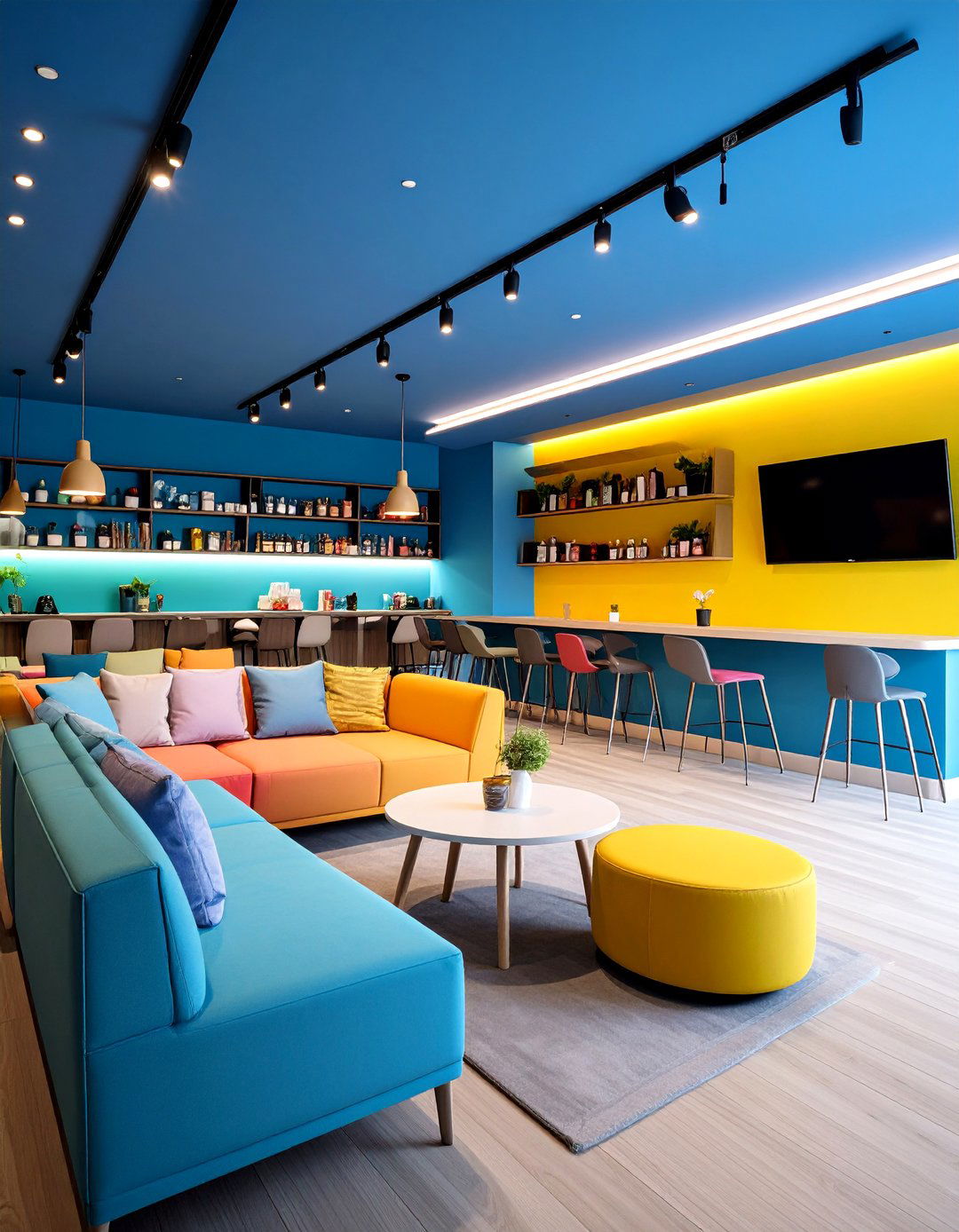
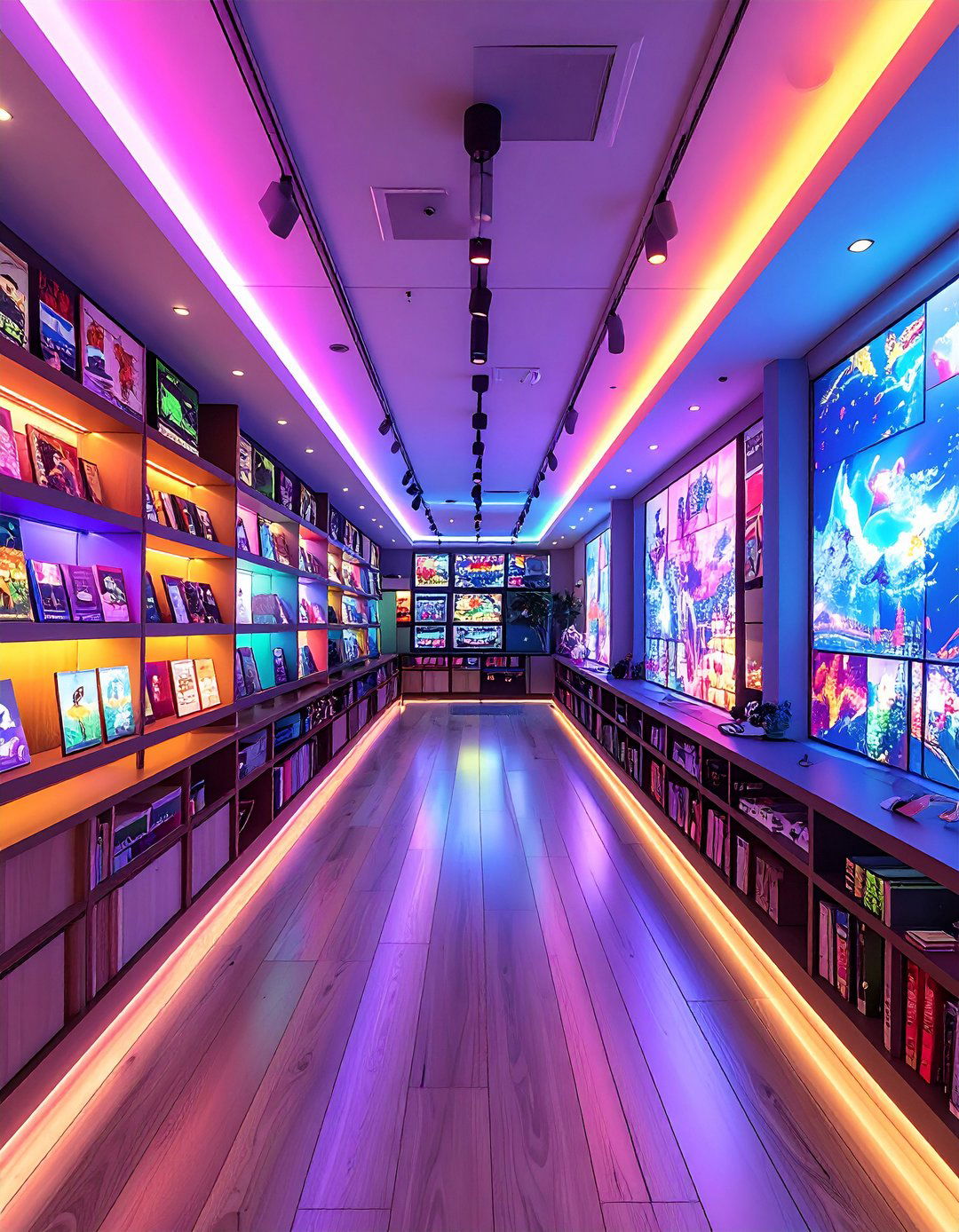
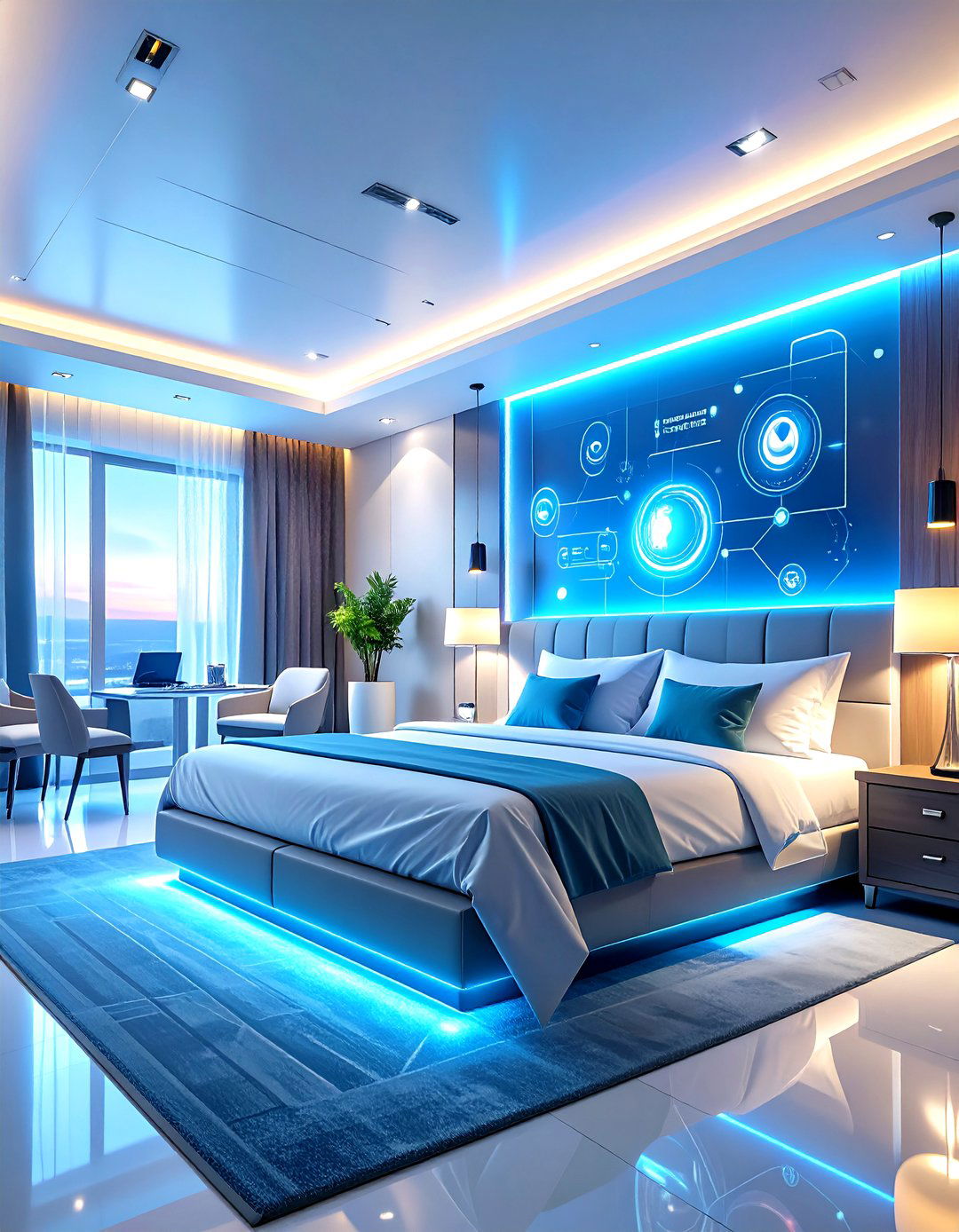
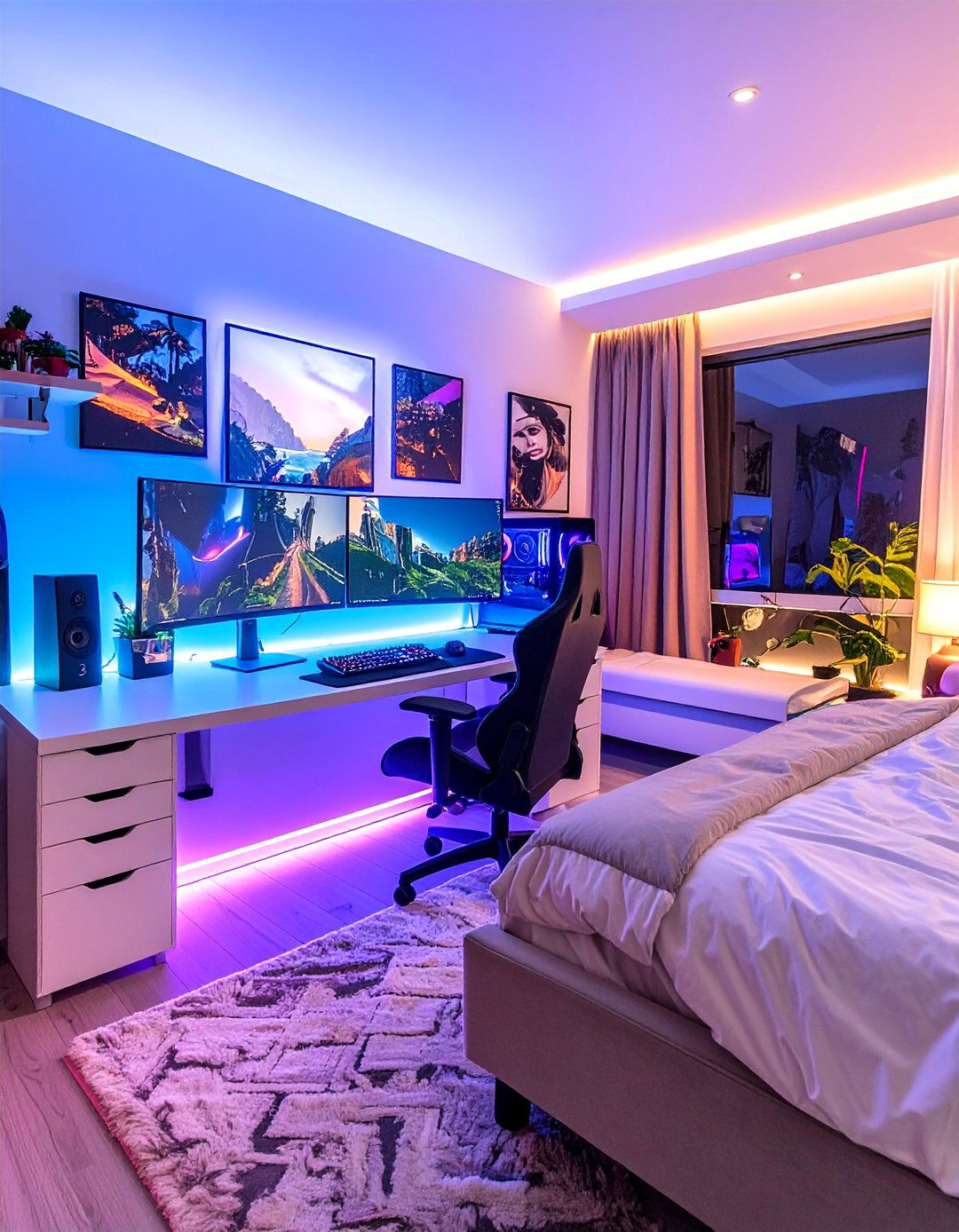
Leave a Reply